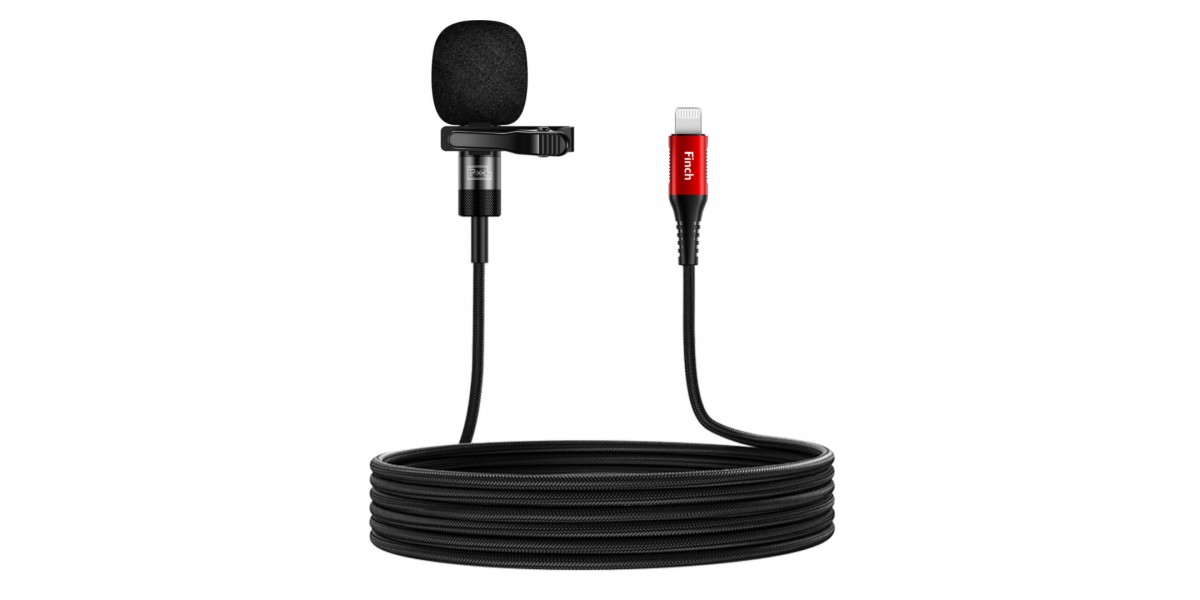The Pixel Finch is a fairly budget-friendly lavalier microphone, designed mainly for users who want to increase their video (audio) production value, but are not quite ready to work with the really expensive options yet.
 And it is true that the increase in the popularity of social media has paid more attention to both video and audio devices, so the competition has become a little tougher, especially in the entry-level segment. Sure, brands like Rode have been dominating the market for some time, but the Pixel microphones have their appeal due to the (usually) good build quality, decent performance and fair price. The Pixel Finch model that I got is only compatible with iPhones and some older iPad models because of the Lightning cable that is firmly attached, so it is not so good in terms of compatibility, entirely because of Apple’s closed ecosystem.
And it is true that the increase in the popularity of social media has paid more attention to both video and audio devices, so the competition has become a little tougher, especially in the entry-level segment. Sure, brands like Rode have been dominating the market for some time, but the Pixel microphones have their appeal due to the (usually) good build quality, decent performance and fair price. The Pixel Finch model that I got is only compatible with iPhones and some older iPad models because of the Lightning cable that is firmly attached, so it is not so good in terms of compatibility, entirely because of Apple’s closed ecosystem.
However, there are two more versions, one with a USB-C port and the other with a 3.5mm port. However, if you intend to make videos indoors, an overhead microphone is usually the better idea for balanced sound, but outdoors and in a noisy environment, a lavalier microphone is the wiser choice. This is because it is closer to your mouth, so the sound should be better, it should also be able to suppress ambient noise better and ideally it should not be affected by the wind. Let’s see if the pixelfink can achieve all this or whether it is better to look for other potentially better options.
Design and build quality
As I said in the intro, Pixel has made some good decisions when it comes to design. And after opening the box, I saw that there was a small bag with the Pixel logo on it, which is a great way to carry the microphone around when you are not using it. After taking the microphone out of my pocket, I noticed that it is made of metal, including the lavalier clip, and we are dealing with a braided cable. So yes, nothing feels cheap and you immediately feel like you are holding a good quality device in your hand.
 The Lightning connector has a plastic case and is covered with a shiny red finish. The manufacturer says that the Pixel Finch is MFi certified and this is a claim that is quite easy to verify (although it can also be vague, as in the case of the Quntis 30W charger), but after checking the website, I quickly realized that the Lavalier microphone was actually approved by Apple. So yes, the Pixel Finch will not harm your iPhone – as I said in the intro, the microphone is also available with other connectors and I’m looking forward to when Apple will finally decide to switch to USB-C as well (which is probably never the case).
The Lightning connector has a plastic case and is covered with a shiny red finish. The manufacturer says that the Pixel Finch is MFi certified and this is a claim that is quite easy to verify (although it can also be vague, as in the case of the Quntis 30W charger), but after checking the website, I quickly realized that the Lavalier microphone was actually approved by Apple. So yes, the Pixel Finch will not harm your iPhone – as I said in the intro, the microphone is also available with other connectors and I’m looking forward to when Apple will finally decide to switch to USB-C as well (which is probably never the case).
Some additional things I need to mention are the fact that the cable is long, actually 9.8 feet long, so you can leave the iPhone on the table and talk freely at a desk – you can also leave the phone in your bag or in your backpack when outside. In addition, the lavalierclip has proven to be sturdy and will not be easily detached from your shirt. I also liked that Pixel has attached a windscreen to the microphone, which in the best case should prevent the annoying wind noise when you record one outdoors.
Unfortunately, it didn’t work so well with a lot of wind and that’s because it’s a pretty cheap foam windscreen, but the good news is that you can replace the existing windscreen with something better (if you want to go the really professional route).
Installation and functionality

This is a plug-and-play device, so the installation process requires that you simply plug the Lightning connector into your iPhone or iPad (which supports this standard). Just make sure that the microphone icon is displayed and you should be ready to go – after that, attach the lavalier microphone to your clothes. There is no need for a proprietary app, the iPhone simply uses it as a microphone, but it also thinks that it is a headphone, so you will not hear sound output from your phone while it is connected.




